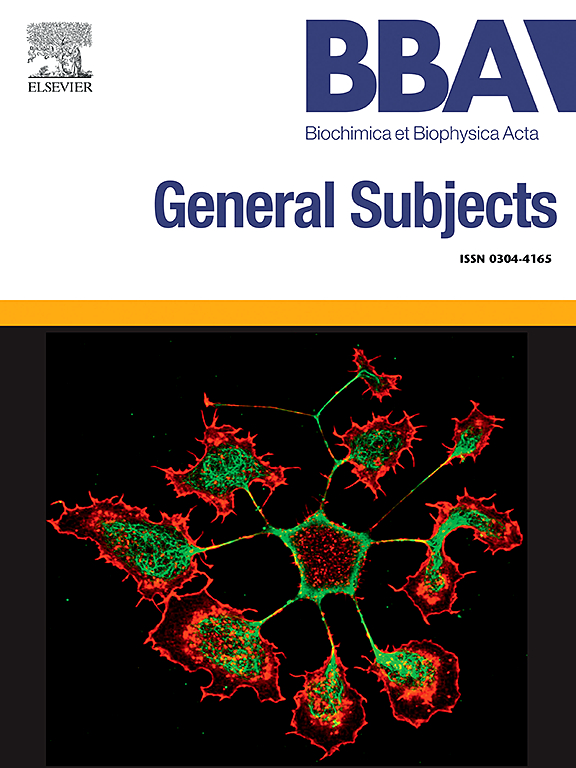抗生素诱导的线粒体功能障碍:探索对HEI-OC1细胞和外周血单核细胞的组织特异性影响。
IF 2.2
3区 生物学
Q3 BIOCHEMISTRY & MOLECULAR BIOLOGY
Biochimica et biophysica acta. General subjects
Pub Date : 2025-06-11
DOI:10.1016/j.bbagen.2025.130832
引用次数: 0
摘要
抗生素对治疗传染病至关重要,特别是对重症监护病房的病人,但它们可能导致耳毒性等副作用。其中一种机制是抗生素靶向真核细胞中的线粒体成分,因为它们与细菌中的线粒体成分相似。在这里,我们研究了五类抗生素——碳绿霉烯类、氟喹诺酮类、氨基糖苷类、糖肽类和恶唑烷酮类——在临床相关浓度下如何影响内耳上皮细胞系(HEI-OC1)和人原代血细胞(PBMCs)的线粒体呼吸功能、ATP生成、线粒体膜电位和活性氧的产生。完整的HEI-OC1细胞中的线粒体呼吸作用受到大多数抗生素的抑制。当HEI-OC1细胞渗透并控制底物供应时,这种效应就消失了。在这些细胞中,ROS生成增加,ATP水平降低。相比之下,相同浓度的抗生素对PBMCs的线粒体功能没有影响。我们发现HEI-OC1细胞对多种抗生素敏感,对线粒体呼吸的毒性机制是在线粒体呼吸链的上游,对线粒体呼吸、ATP水平和ROS水平有下游影响。本文章由计算机程序翻译,如有差异,请以英文原文为准。

Antibiotic-induced mitochondrial dysfunction: Exploring tissue-specific effects on HEI-OC1 cells and peripheral blood mononuclear cells
Antibiotics are crucial in treating infectious diseases, particularly in intensive care unit patients, but they can lead to side effects such as ototoxicity. A mechanism for this is antibiotics targeting mitochondrial components in eucaryotic cells, due to their resemblance of those in bacteria. Here we investigate how five classes of antibiotics (carbapenems, fluoroquinolones, aminoglycosides, glycopeptides, and oxazolidinones) affect mitochondrial respiratory function, ATP levels, mitochondrial membrane potential and levels of reactive oxygen species in an inner-ear derived epithelial cell line (HEI-OC1) and human primary blood cells (PBMCs) at clinically relevant concentrations.
Mitochondrial respiration in intact HEI-OC1 cells was suppressed in response to the majority of the tested antibiotics. This effect was lost when the HEI-OC1 cells were permeabilized and substrate supply controlled. Further in these cells, ROS levels were increased and ATP levels reduced. In contrast, no measure of mitochondrial function of PBMCs was affected by any antibiotics at the same concentration. We show that HEI-OC1 cells are sensitive to a broad range of antibiotics, and that the mechanism of toxicity to mitochondrial respiration is upstream of the mitochondrial respiratory chain, with downstream effects on mitochondrial respiration, ATP levels and ROS levels.
求助全文
通过发布文献求助,成功后即可免费获取论文全文。
去求助
来源期刊

Biochimica et biophysica acta. General subjects
生物-生化与分子生物学
CiteScore
6.40
自引率
0.00%
发文量
139
审稿时长
30 days
期刊介绍:
BBA General Subjects accepts for submission either original, hypothesis-driven studies or reviews covering subjects in biochemistry and biophysics that are considered to have general interest for a wide audience. Manuscripts with interdisciplinary approaches are especially encouraged.
 求助内容:
求助内容: 应助结果提醒方式:
应助结果提醒方式:


